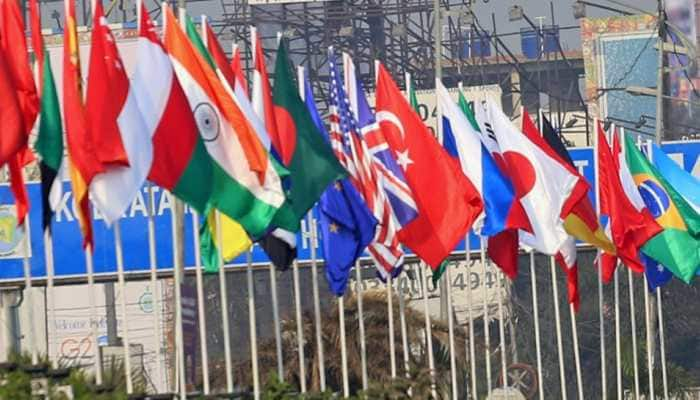Constitution Day 2022: 10 interesting facts about ‘holy’ book of Independent India
Constitution Day is celebrated on November 26 every year to celebrate the sanctity of the most important textbook constructed in independent India.
Trending Photos
) Representational Image
Representational Image India’s essence of Democracy originates from the "holy" book, or Constitution, which is worshipped by both lawmakers and citizens for its ability to grant us freedom, a sense of living, equality, and everything needed by a citizen to live a dignified life. November 26, 1949, was the ‘pious’ day when the Constituent Assembly of independent India duly adopted the present constitution and upheld its importance in the working of the country. On November 19, 2015, the year which marked the 125th birth anniversary of the Chairman of the Drafting Committee of Constitution, Dr Bhim Rao Ambedkar, the Ministry of Social Justice and Empowerment notified the Indian government’s decision of marking November 26 as “Constitution Day”, giving it a proper due of recognition it truly deserves.
Dr BR Ambedkar, along with other members of the Drafting Committee of the Constituent Assembly, including KM Munshi, Muhammed Saadulah, Alladi Krishnaswamy Iyer, Gopala Swami Ayyangar, N. Madhava Rao, duly adopted the constitution to commemorate the idea of Purna Swaraj put forth by Nehru in 1928.
About Constitution
The Constitution of India, the country's supreme law, establishes the framework for defining the fundamental political code, organisational structure, operational procedures, and responsibilities of governmental institutions, as well as the fundamental rights, guiding principles, and duties of citizens. It is the world's longest-written national constitution.
The document imparts constitutional supremacy and was adopted by its people with a declaration in its preamble.
The Indian Constituent Assembly approved the Constitution on November 26, 1949, and it went into effect on January 26, 1950. The Dominion of India became the Republic of India when the constitution took the place of the Government of India Act 1935 as the primary law governing the nation. Article 395 of the constitution was repealed by its framers to ensure constitutional autochthony. Apart from 26 November, Republic Day, which is observed on January 26, honours India's constitution.
The constitution declares India a sovereign, socialist, secular, and democratic republic, assures its citizen's justice, equality, and liberty, and endeavours to promote fraternity. The words "secular" and "socialist" were added to the preamble by the 42nd amendment act in 1976 during the Emergency.
“However good a constitution may be, if those who are implementing it are not good, it will prove to be bad. However bad a constitution may be, if those implementing it are good, it will prove to be good”: Dr Bhim Rao Ambedkar
Interesting facts about Constitution
1. The original 1950 constitution is preserved in a nitrogen-filled case at the Parliament House in New Delhi.
2. MN Roy was the first person to suggest the idea of establishing a Constituent Assembly in 1934, which eventually became an official demand of the Indian National Congress 1935.
3. The Constitution of India is also known as the ‘Bag of Borrowings’ as it has borrowed provinces from the Constitutions of various countries. However, it was drafted according to the historical perspective, geographical diversity, and cultural and traditional characteristics of India.
4. The Constitution of India, which is the longest written constitution in the world, has been handwritten and calligraphed in both Hindi and English by Prem Narain Raizada and was published by him in Dehradun.
5. The Constitution came into force with a total expenditure of around Rs 64 lakh.
6. Around 2000 amendments were made in the first draft of the constitution.
7. Dr Bhim Rao Ambedkar once wanted to burn the constitution. “It is by placating the sentiments of smaller communities and smaller people who are afraid that the majority may do wrong, that the British Parliament works. Sir, my friends tell me that I have made the Constitution. But I am quite prepared to say that I shall be the first person to burn it out. I do not want it. It does not suit anybody. But whatever that may be, if our people want to carry on, they must not forget that there are majorities and there are minorities, and they simply cannot ignore the minorities by saying, “Oh, no. To recognise you is to harm democracy.” I should say that the greatest harm will come by injuring the minorities.”
8. Indian women got the right to vote after the enforcement of the Constitution of India. Earlier, they were denied this right. Only men were allowed to cast votes.
9. Dr Rajendra Prasad, the first President of India was the first person to sign the Constitution. Feroze Gandhi, the then President of the Constituent Assembly, was the last one to sign it.
10. The 42nd Amendment Act of 1976, is known as the “Mini Constitution” as it has brought the most important amendments to the Indian Constitution. It changed the description of India from a "sovereign democratic republic" to a "sovereign, socialist secular democratic republic", and also changed the words "unity of the nation" to "unity and integrity of the nation".
Stay informed on all the latest news, real-time breaking news updates, and follow all the important headlines in india news and world News on Zee News.
Live Tv







)
)
)
)
)
)
)
)
)
)
